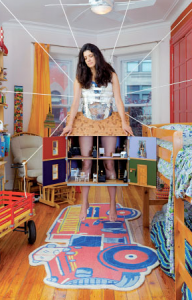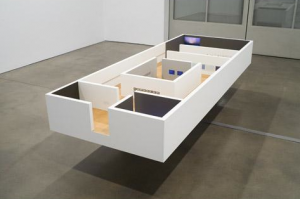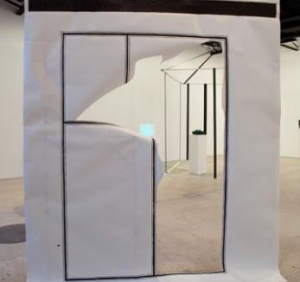The feeling of silent stillness in this memorial exhibition of Tracey Baran’s self-portraits and photographs of her family and friends is palpable, an affecting parallel to a life suddenly stopped short after a brief illness at age 33. The action of Baran’s past hunting, demolition derby and road-trip photo series has been excluded to show the artist in the context of those she cared about in intimate moments of friendship, restful calm, and longing. Sometimes considered a chronicler of small town life, this show convincingly argues that Baran pursued grander themes, uncovering evidence of the profound mysteries of familial and romantic love in rural America.
Baran’s more wistful pictures now appear prescient; as she kisses a steamy window after a goodbye or gazes out a window with fingers crossed, she’s not just a young woman caught up in her inner world but a harbinger of more profound loss. Other pictures beautifully capture a time of life when major decisions are frighteningly open and the future is yet to be written, as in ‘Today I’m 30’ in which Baran greets a new decade with a spirited scowl as she curls up on the edge of her bed near a solitary cupcake.
Baran’s photographs have the quietude of a stage, not just the country or her thought life. Several of her contemporaries were influenced by Gregory Crewdson’s artificial dramas; Baran shares his fascination with rural life but not its noir mood, the stories told via her portraits are informed by art history and first-hand knowledge of her subjects. Her father morphs from misfit to thinker in a bathtub portrait that recalls David’s Marat, Baran channels Girodet to picture her boyfriend awash in a celestial glow in a mossy glade, ‘In the Garden’ pictures the two in archetypal roles as Adam and Eve, while ‘Ivy’ depicts Baran as an unorthodox odalisque who’s taken a roll in some poison ivy. Such references might help validate her eccentric characters for us, but the tenderness with which they are depicted suggests that for Baran, the ones she loved transcended time and place.
Originally published in Flash Art, November – December 2009.



